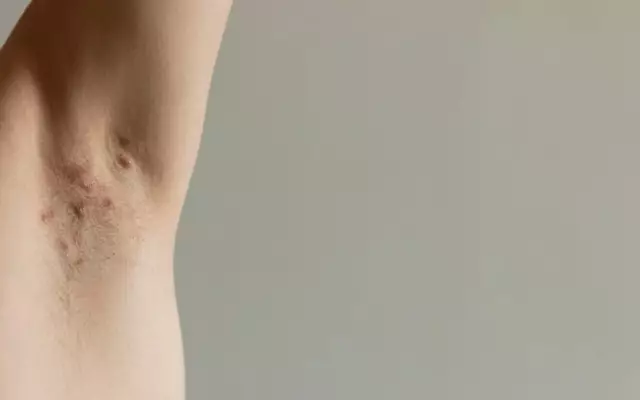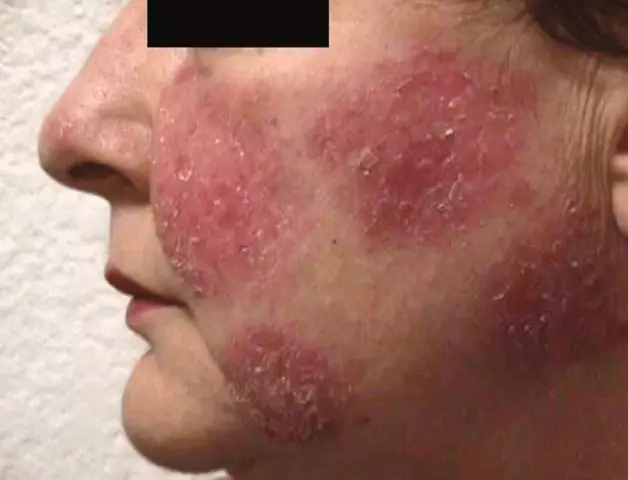- Author Rachel Wainwright [email protected].
- Public 2023-12-15 07:39.
- Last modified 2025-11-02 20:14.
Tick-borne borreliosis (Lyme disease)
General information about the disease

In 1975, in the small town of Lyme, the first studies of an infectious disease called tick-borne borreliosis (Lyme disease) began. It is caused by spirochetes and transmitted by ticks of the genus Ixodes dammini. Most often, pets and livestock act as carriers of these parasites, but rats and mice also make a significant contribution to the spread of the infection, whose body is a real incubator for immature ticks.
In the vast majority of cases, Lyme disease has a chronic and recurrent course. The disease affects the skin, nervous system, musculoskeletal system and heart. The infection enters the human body through the bites of infected ticks. They are most active in the summer. Accordingly, the risk of contracting Lyme disease (borreliosis) increases precisely in the warmer months, by analogy with tick-borne encephalitis. Lyme disease outbreaks are regularly recorded in all regions of the Russian Federation, therefore, every person should remember about an elementary precaution during summer holidays, regardless of where he lives - in Siberia or in the Krasnodar Territory.
What happens after a tick bite?
Infection occurs during a tick bite. With the saliva of the parasite, Borrelia enter the skin and begin to multiply vigorously. Over time, they spread to other areas of the skin and penetrate the internal organs. If Lyme disease is suspected, treatment of the patient should begin as soon as possible, since ticks tend to persist in the host's body for many years, causing relapses and the chronic nature of Lyme disease. In many ways, borreliosis is similar to the symptoms of syphilis.
Lyme disease - symptoms and clinical picture
In 70% of cases, a red spot appears at the site of the bite, which grows rapidly, often reaching 30-40 cm in diameter. The spot may be irregular, but usually oval or round. In this case, the outer edges of the inflamed skin rises above the level of healthy skin. Directly at the site of the bite, the spot turns pale or takes on a bluish tint over time, and first a crust appears in its center, and then a small scar. Regardless of whether a person consults a doctor or not, the stain will disappear by itself in 2-3 weeks, and after about 1.5 months, Lyme disease (borreliosis) will manifest itself in the form of lesions of the central nervous system, heart and musculoskeletal system. For this reason, any tick bite should be considered as a threat to human life and health,which entails an early visit to a doctor for a full examination.
Confirmation of the diagnosis of Lyme disease is made by examining blood samples.
Lyme disease - disease treatment
The patient is sent to the infectious diseases department of the hospital. The main therapeutic measures are aimed at the destruction of borrelia, which prevents the progression of Lyme disease and its transition to a chronic form. Otherwise, Lyme disease leads to damage to the vital systems of the body and disability.
In the early stages, the symptoms of Lyme disease can be successfully treated with antibiotics, but it should be borne in mind that such treatment will only be effective if the patient does not have signs of fever and body intoxication. Of course, the choice of specific antibiotics and their dosage in Lyme disease should be determined only by an experienced physician, taking into account the clinical manifestations of the infection and the patient's condition. We will only list the most famous remedies used by specialists in the diagnosis of Lyme disease. These include: amoxycycline, chloramphenicol, doxycycline, tetracycline, penicillin and chloramphenicol succinate.
After discharge from the hospital, patients are subject to mandatory medical examination. Examinations are carried out for 2 years after 3, 6, 12 months and 2 years after the end of treatment.
Prevention of Lyme disease
To prevent tick bites, both direct (extermination of parasites in nature) and indirect (protective) measures are used. We understand perfectly well that not everyone will dare to wear special anti-mite suits during rest, but ordinary clothes can be easily adapted for these purposes. If you don't want to catch Lyme disease, tuck your shirt into your trousers and your trousers into your boots or high boots when going out into the woods or the countryside. In addition, it is highly advisable to wear long sleeved shirts and fit the cuffs tightly. There are also less radical methods of protection. So, for example, you can spray the open areas of the body with various repellent repellents (Diftolar, DEET) or soak clothes with special preparations such as the domestic remedy "Permet".
If prevention did not help, then immediately after the bite you need to see a doctor. Remember that if left untreated, Lyme disease can make you disabled, so don't count on luck, much less self-medication. Believe me, mainstream medicine can cope with Lyme disease much faster and more efficiently than you yourself.
YouTube video related to the article:
The information is generalized and provided for informational purposes only. At the first sign of illness, see your doctor. Self-medication is hazardous to health!






